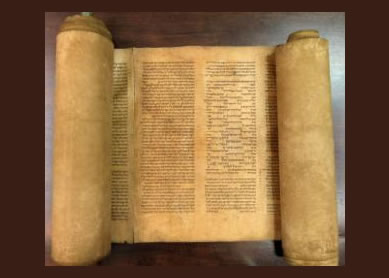Q. Did Jesus indicate that he wanted to form a Church separate and antagonistic to the Israelite religion of his time?
A. Jesus could not have envisioned the institutionalized and hierarchical organization that the word “church” denotes today. Some even doubt that Jesus envisioned any continuing community, because he preached the imminent end of the age.
Also, the Greek word for “church” (ekklesia) appears only twice in the Gospels (Matt 16:18; Matt 18:17). while it occurs 62 times in Paul’s writings, suggesting that Paul, rather than Jesus, developed the idea. Nevertheless, some observations indicate that Jesus did envision a continuing community.
First, a teacher’s gathering of a perennial community was not an extraordinary custom in Jesus’ day. The Teacher of Righteousness shaped a community at Qumran in order to preserve teaching, simultaneously expecting the end of the age.
Second, the Gospels record Jesus’ teaching on an indefinite period during which his followers must discern how to live in a hostile world (Mark 13:9-13. He calls the twelve disciples to follow him and instructs them in the Sermon on the Mount (Matt 5-7), covering a variety subjects like divorce, anger, and love for one’s enemies, which assume that people are living in relationship to others.
Third, there is no evidence that Jesus was antagonistic to the Jewish religion, or that he passed on teaching characterized by antagonism to his followers. Jesus himself was a Jew who proclaimed that he did not come to abolish but to fulfill the law (Matt 5:17), he quoted Jewish scriptures (Matt 4:1-11), taught in synagogues throughout Judea and Galilee (Matt 9:35; Luke 4:44), and traveled to Jerusalem to keep the Jewish festivals (John 2:23; John 10:22). Indeed, Jesus envisioned Israel’s restoration (Matt 15:24; Luke 13:34).
Rather, Jesus was antagonistic towards certain ideas and actions of the Judean authorities. He frequently denounced the hypocrisy of the scribes and Pharisees (Matt 15:1-12; Luke 11:37-54), and displayed his criticism of the temple authorities when he overturned the moneychangers’ tables, the incident which precipitated his arrest (Mark 11:15-19).
Fourth, the first community of believers was a sect within Judaism rather than a group that separated itself from Judaism. Acts 2:42 records the practice of this first community, each aspect of which preserves Jesus’ teaching and actions: the apostles’ teaching, fellowship, the breaking of bread, and the prayers (see, for example, Matt 6:9-13; Mark 14:22-25). As this community proclaimed Jesus as the Jewish Messiah and attracted Gentiles, though, it had to work out its relationship to Judaism, generating fraction and tension. Sadly, the Church through the ages has periodically expressed antagonism to Jews, misusing the Bible and misunderstanding Jesus’ mission in the world. We would do well to keep in mind that Jesus’ greatest teaching was about love.
Bibliography
- Evans, Craig A. From Jesus to the Church: The First Christian Generation. Louisville, KY: Westminster John Knox Press, 2014.
- Keener, Craig. The Historical Jesus of the Gospels. Grand Rapids, MI: Wm. B. Eerdmans Publishing Co., 2012.
- Hick, John. The Metaphor of God Incarnate: Christology in a Pluralistic Age. Louisville, KY: Westminster John Knox Press, 1993.
- Vermes, Geza. The Religion of Jesus the Jew, Minneapolis: Augsburg Fortress, 1993.




